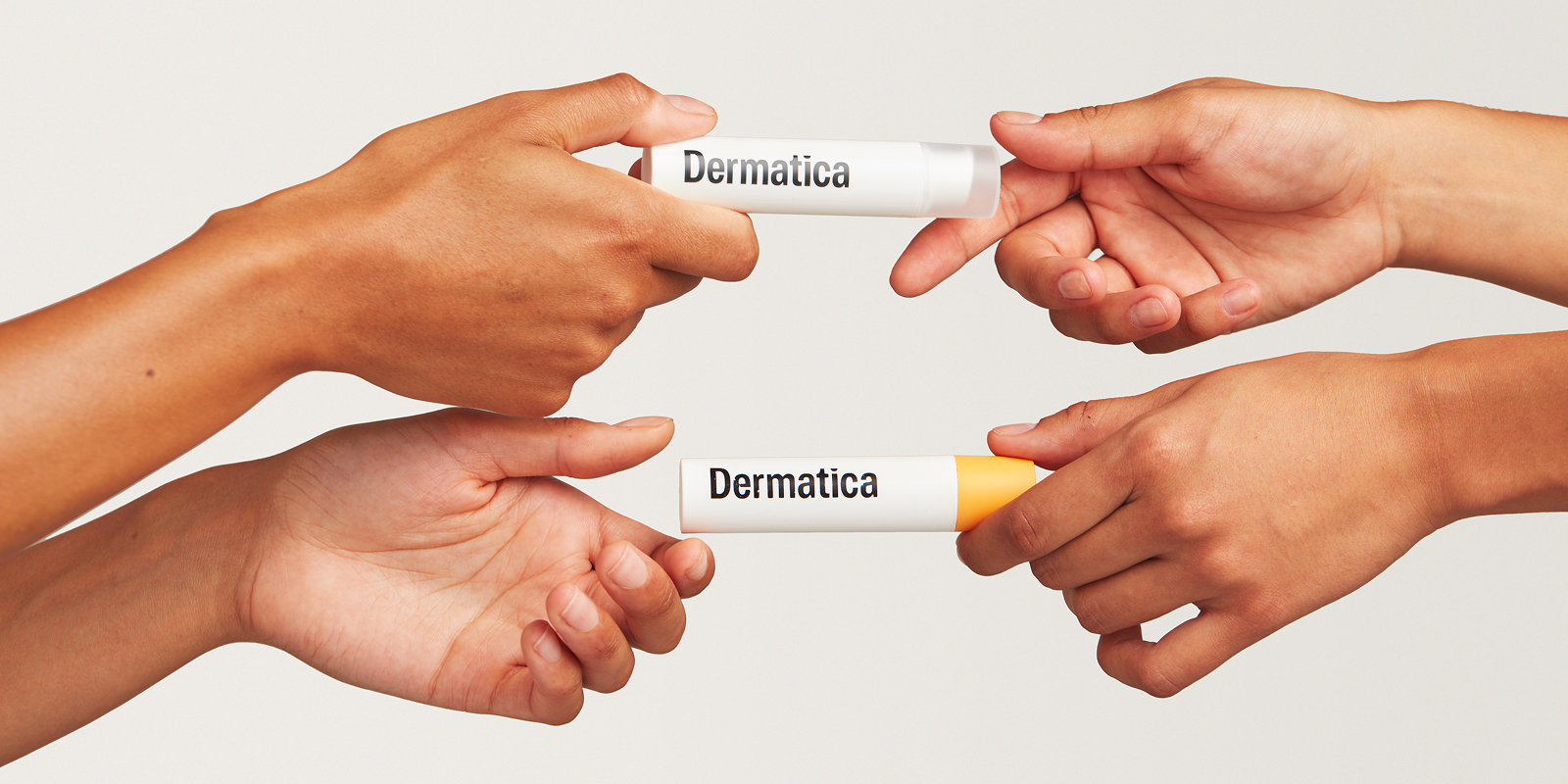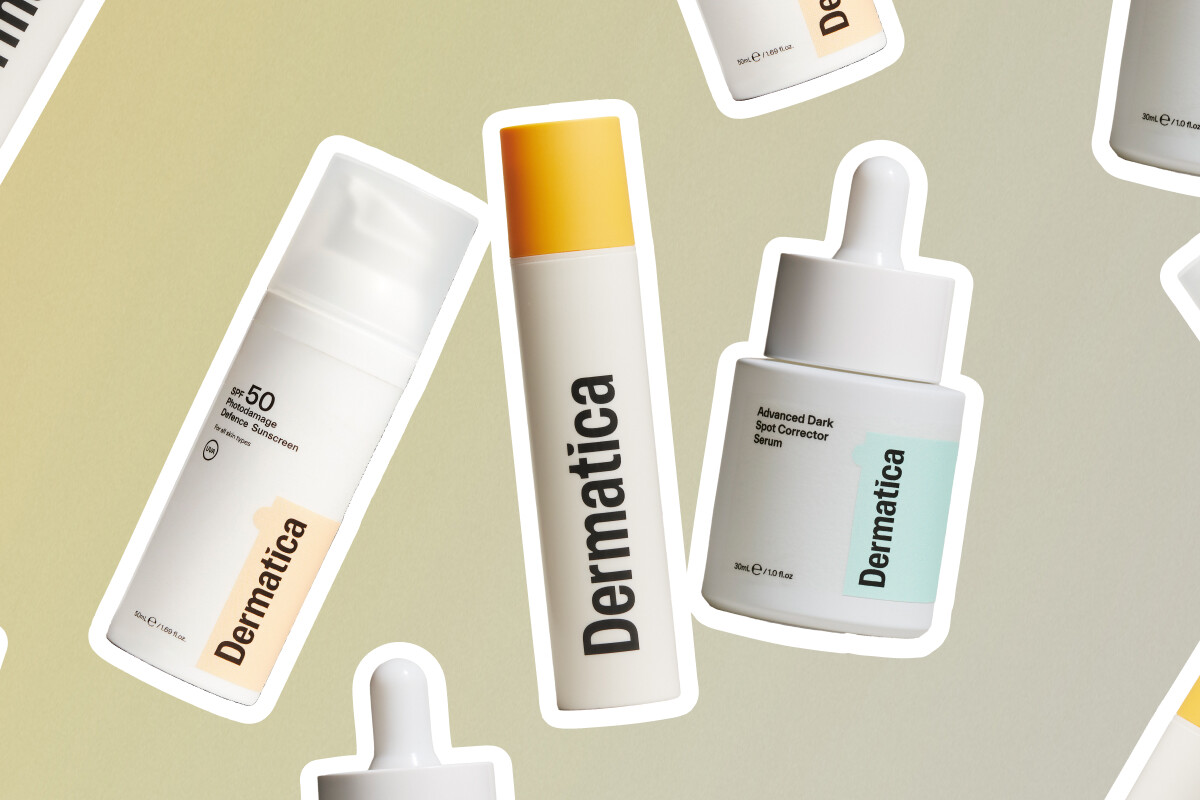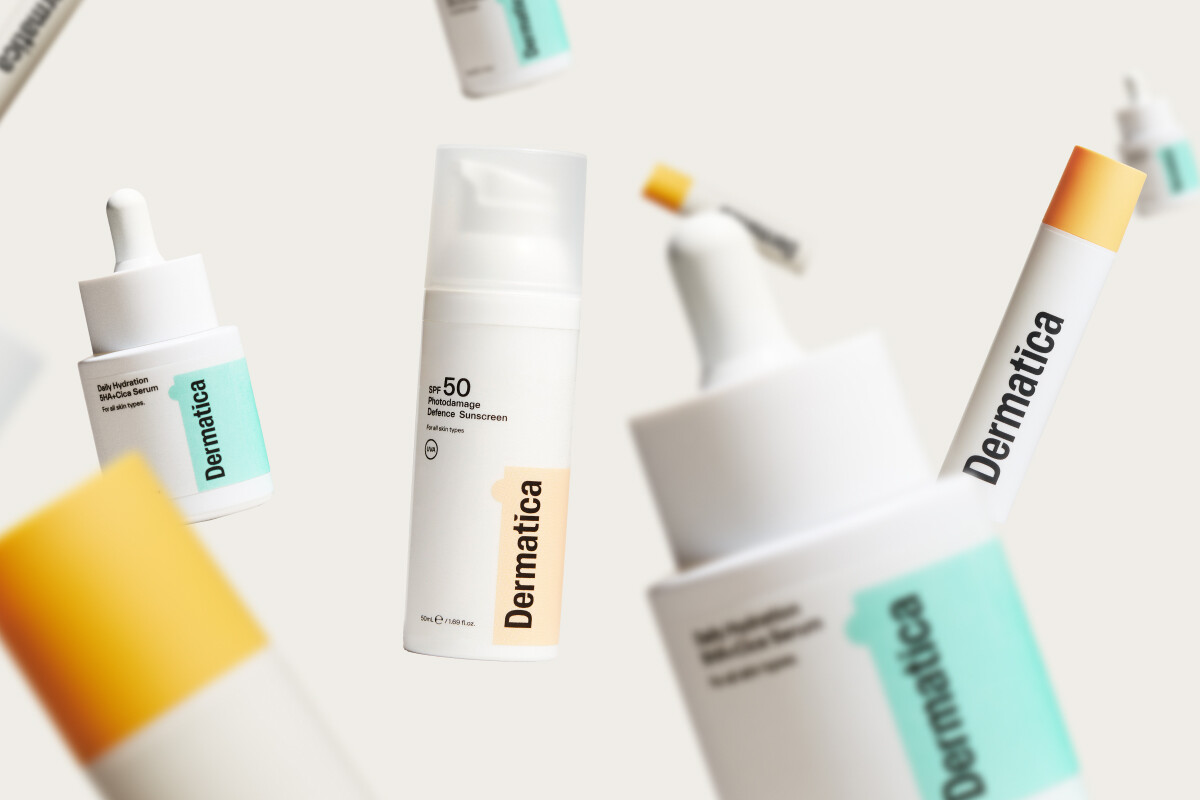The best ingredients to tackle UV damage
Sun exposure is one of the leading causes of premature skin aging, pigmentation, brown spots (or sun spots) and even skin cancer. But how does UV damage affect your skin—and which skincare ingredients can help with anti-aging and prevent or even repair sun damage?
In this guide, we’ll share the science behind UV exposure, how it impacts your skin, and the best ingredients to fight it with.
What is UV Damage and How Does It Affect Your Skin?
Ultraviolet (UV) radiation from the sun can damage your skin, both on the surface, and at a cellular level. When skin is exposed to sunlight without protection, free radicals from the environment cause oxidative stress in the cells. This breaks down collagen and elastin fibres—the building blocks of firm, youthful skin—faster than usual. [1] Over time, this leads to premature signs of ageing, which include:
– Fine lines, wrinkles and loss of firmness: As we get older, an essential protein in our skin called collagen naturally breaks down—making our skin weaker and less likely to repair itself. Less collagen leads to less volume and flexibility in our skin, making visible lines appear or become more noticeable. [2] [3]
– Hyperpigmentation, dark spots, sun spots and melasma: UV damage leads to freckles, dark spots (also known as sun spots), dullness, melasma, and uneven pigmentation. [4]
– Dryness and rough texture: UV radiation disrupts how well our skin barrier functions, and can make it dehydrated or more prone to irritation. [5]
– Increased risk of skin cancer: Over time, excessive UV exposure is extremely dangerous and can cause deadly skin cancers, like melanomas. [6]
The Best Protection Against Sun Damage: Prevention
The most effective way to protect your skin from UV damage is to use a broad-spectrum sunscreen with at least SPF 30 every single day, even if it’s cloudy outside (UV rays penetrate through clouds) but especially on sunny days. [7]
Sunscreen is important all year round. During the summer months particularly, you should reapply it throughout the day during the summer months — at least every two hours, or after swimming or sweating. Research has shown that regular sunscreen use reduces the signs of UV damage on the skin, and lowers the risk of skin cancer. [8]
Vitamin C: Your Daily Antioxidant Shield
You can defend your skin against UV damage by combining sunscreen with a Vitamin C serum.
A potent antioxidant, Vitamin C (L-Ascorbic acid) helps neutralize free radicals from UV exposure and pollution to prevent early aging and DNA damage. [1]
Even better news: Vitamin C plays a role in brightening the skin, reducing existing pigmentation and supporting skin barrier health, making it a valuable ally in both prevention and treatment of existing UV damage.
Can You Reverse the Signs of Sun Damage?
Yes, certain ingredients can help to reverse signs of sun damage such as sunspots, fine lines, wrinkles, uneven texture and pigmentation. Some acids like AHAs can boost collagen and speed up cell turnover, but no ingredient is better for this than prescription retinoids.
Treating UV Damage: The Gold Standard
When treating existing signs of UV damage, prescription retinoids (like tretinoin) are the most effective options — research suggests they can actively reverse visible UV damage. [9] By stimulating both collagen production and cell turnover, retinoids can be used as a long-term treatment for wrinkles, hyperpigmentation, enlarged pores and overall skin tone and texture.
Non-Prescription Ingredients for Treating UV Damaged Skin
If prescription retinoids aren’t available to you, there are still many science-backed, non-prescription treatments you can try.
Here’s an overview of what you can use and how it works:
– Retinal: Also a derivative of Vitamin A, retinal is a non-prescription retinoid that offers similar benefits—but it is gentler than tretinoin. It works more quickly and effectively than retinol, and is a safer alternative if you’re intolerant to prescription retinoids. [1]
Note: Retinoids (Vitamin A), including tretinoin, retinal or retinol, are not recommended during pregnancy and breastfeeding.
– Niacinamide: This multi-tasking antioxidant strengthens the skin barrier, reduces pigmentation, and has anti-inflammatory effects. [10]
– Hyaluronic acid: While it doesn’t repair UV damage, hyaluronic acid deeply hydrates and improves skin texture, addressing the dryness and roughness associated with sun exposure. [11]
Should You Stop Using Active Ingredients in Summer?
It isn’t necessary to stop actives during the summer — but it’s important to be extra diligent with sun protection.
Some active ingredients like retinoids and AHAs can make your skin more sensitive to sunlight, which is why this myth persists. But with the right steps, actives are safe to use throughout summer.
Always use a broad-spectrum sunscreen — ideally SPF 50+ — to help protect your skin and maintain results.
Tip: Although actives like retinoids increase sun sensitivity, pausing your treatment for weeks, or even months, may slow down and reverse your progress.
Instead
1. Remember to wear SPF50+ sunscreen with broad-spectrum protection, and reapply every two hours when outside. Try to stay out of direct sunlight whenever you can.
2. Apply retinoids at night and gently cleanse skin in the morning.
3. Prep your skin for an active-rich routine with a hydrating, barrier-strengthening serum and/or moisturizer twice a day
4. Add Vitamin C (L-Ascorbic acid) to your morning routine to boost your skin’s natural defences against UV damage.
The Best Treatment is Good Defence
Premature aging, dark spots and thickened skin from sun damage are treatable — but reversing these concerns will cost a lot more (in both time and money) than staying protected. Sunscreen also helps defend your skin against the cellular damage you can’t see, and lowers your risk of skin cancer.
Find out what formulas are suitable for your skin by visiting our website.
References:
1. Pandel R, Poljšak B, Godic A, Dahmane R. Skin Photoaging and the Role of Antioxidants in Its Prevention. ISRN Dermatology [Internet]. 2013;2013:1–11. Available from: https://www.ncbi.nlm.nih.gov/pmc/articles/PMC3789494/
2. Pain S, Berthélémy N, Naudin C, Degrave V, André-Frei V. Understanding Solar Skin Elastosis-Cause and Treatment. Journal of Cosmetic Science [Internet]. 2018;69(3):175–85. Available from: https://pubmed.ncbi.nlm.nih.gov/30052192/
3. Lee JH, Roh MR, Lee KH. Effects of Infrared Radiation on Skin Photo-Aging and Pigmentation. Yonsei Medical Journal [Internet]. 2006 [cited 2019 Jul 25];47(4):485. Available from: https://www.ncbi.nlm.nih.gov/pmc/articles/PMC2687728/
4. Praetorius C, Sturm RA, Steingrimsson E. Sun-induced freckling: ephelides and solar lentigines. Pigment Cell & Melanoma Research. 2014 Mar 3;27(3):339–50.
5. Guerra KC, Crane JS. Sunburn [Internet]. PubMed. Treasure Island (FL): StatPearls Publishing; 2023. Available from: https://pubmed.ncbi.nlm.nih.gov/30521258/
6. Pfeifer GP. Mechanisms of UV-induced mutations and skin cancer. Genome Instability & Disease. 2020 Mar 19;1(3).
7. Gabros S, Zito PM. Sunscreens And Photoprotection [Internet]. Nih.gov. StatPearls Publishing; 2019. Available from: https://www.ncbi.nlm.nih.gov/books/NBK537164/
8. Sander M, Sander M, Burbidge T, Beecker J. The Efficacy and Safety of Sunscreen Use for the Prevention of Skin Cancer. Canadian Medical Association Journal [Internet]. 2020 Dec 13;192(50):E1802–8. Available from: https://www.ncbi.nlm.nih.gov/pmc/articles/PMC7759112/
9. Sitohang IBS, Makes WI, Sandora N, Suryanegara J. Topical tretinoin for treating photoaging: A systematic review of randomized controlled trials. International Journal of Women’s Dermatology. 2022 Mar;8(1):e003
10. Thawabteh AM, Jibreen A, Karaman D, Thawabteh A, Karaman R. Skin Pigmentation Types, Causes and Treatment—A Review. Molecules [Internet]. 2023 Jun 18;28(12):4839. Available from: https://www.mdpi.com/1420-3049/28/12/4839
11. Hooda R, Madke B, Choudhary A. Photoaging: Reversal of the Oxidative Stress Through Dietary Changes and Plant-Based Products. Cureus [Internet]. 2023 Apr 1;15(4):e37321. Available from: https://pubmed.ncbi.nlm.nih.gov/37182009/




